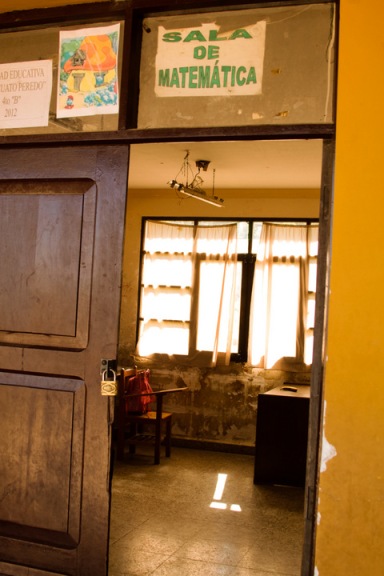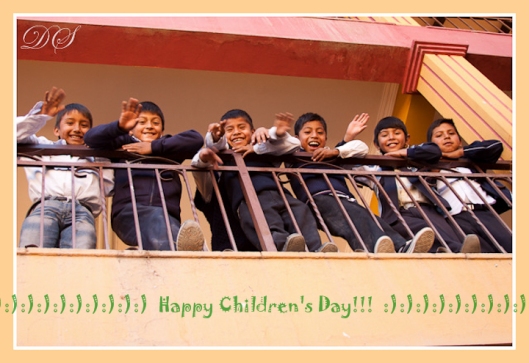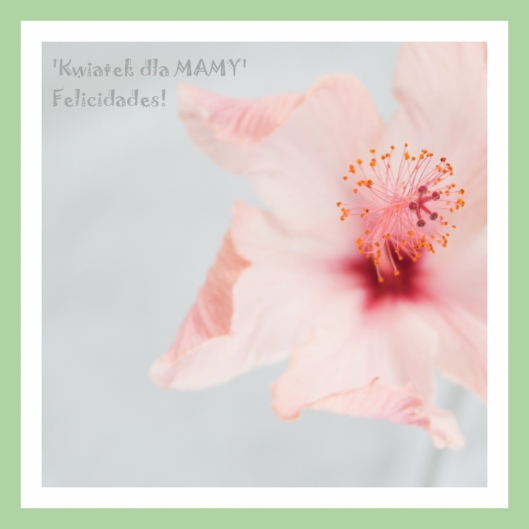W roku 2009, boliwijski prezydent Evo Morales, z pochodzenia Aymara, ogłosił 21 czerwca świętem narodowym – Nowym Rokiem Aymara zwanym rowniez Nowym Rokiem Andyjsko – Amazonskim (año nuevo andino amazónico). Nowy Rok Aymara to nic innego jak celebracja przesilenia zimowego. W Ameryce pre-kolonialnej, u rdzennych ludów andyjskich zależnych od rolnictwa, przeprowadzono rytuały religijne w celu uzyskania błogosławieństwa bogów, przede wszystkim Pachamamy (Matki Ziemi) i Inti (Ojca Słońca), mających zapewnić obfitość zbiorów. Ludy Keczua i Aymara, oraz niektóre plemiona amazońskie, świętowały dwa razy w roku: z okazji siewów i zbiorów, co zbiegło się z przesileniem letnim i zimowym.
Według tradycji, każdego 21 czerwca przed wschodem słońca, grupa amautas (kapłanów Aymara) spotykała się w świątyni Kalasasaya, w Tiwanaku , gdzie przygotowywała toasty (wassail), paliła ofiary i poświęcała małe lamy. Kapłani czekali na pierwsze promienie słońca, przechodzące przez Bramę Słońca, znajdującą się w kompleksie świątynnym. Tak oto, odbywała się oficjalna inicjacja nowego cyklu rolnego.
Aymara nie dzielili roku na 4 pory i 12 miesięcy, ale mieli dwa sposoby na odmierzanie czasu. Pierwszy to rok słoneczny, który dzieli się na dwa okresy – letniego przesilenia (grudzień-styczeń) i przesilenia zimowego (czerwiec-lipiec). Ten drugi okres kończy się właśnie 21 czerwca. Inny sposób, to podział kalendarza na trzy okresy zwane “Pachas ‘, podzielone dalej ze względu na klimat.
Według kalendarza Aymara, przekazywanego ustnie z pokolenia na pokolenie, 21 czerwca 2013 r. będzie oznaczać 5521 rok kultury Aymara. Ministerstwo Kultury planuje i promuje uroczystości w La Paz, Cochabambie, Santa Cruz, Uyuni i mniejszych miasteczkach. W La Paz uroczystości odbywają się w Tiwanaku, Sorata, El Alto, Copacabanie, Valle de la Luna i Pasto Grande. W Cochabambie, w ruinach Incallajta. W Santa Cruz centrum obchodów jest Samaipata, chociaż ruiny El Fuerte nie są pochodzenia Aymara.
*
Z 10 milionów Boliwijczyków, tylko około 2 mln osób identyfikuje się jako Aymara, z czego wielu jest naprawdę Metysami (mix Aymara z Europejczykami). Reszta społeczeństwa nie podziela konieczności obchodzenia Nowego Roku Aymara jako święta narodowego, ale na firmy, których pracownicy nie dostają wolnego, zostają nałożone kary pieniężne.
Najistotniejszy argument tych osób, którzy sprzeciwiają się temu świętu, opiera się na fakcie, że Boliwia nie jest narodem Aymara. W rzeczywistości, w Boliwii istnieją dziesiątki rodzimych narodowości i dlatego, ich zdaniem, rytuały tylko jednej z nich dyskryminują inne bardzo duże grupy etniczne, takie jak Quechua i Guarani. Ich zdaniem Nowy Rok Aymara powinien być ograniczony do regionów rodzimych Aymara czyli zachodniej Boliwii. Nie przemawia do nich fakt, iz przesilenie zimowe bylo takze celebrowane przez Indian z Amazonii, bowiem wiekszosc ludnosci wschodiej Boliwii, odcina sie od swoich indianskich korzeni.
Przeciwnicy wskazują również na argument konstytucyjny. Nowa konstytucja Boliwii, uchwalona w 2009 za namową obecnego rządu, ustanawia Boliwię ‘państwem wielonarodowym’ i gwarantuje poszanowanie zwyczajów i stylu życia każdego i każdej z 36 grup etnicznych zamieszkujących Boliwię. Zmuszanie innych do obchodów Roku Aymara jest więc , wedlug nich, niezgodne z konstytucją.
Są także tacy, którzy twierdzą, że nie ma dowodów na to, by lud Aymara kiedykolwiek świętował Nowy Rok przed przybyciem Hiszpanów. Uwazają, że to ‘święto’ jest niczym więcej niż obchodami zbioru ziemniaków, które w rzeczywistości nie miało miejsca 21 czerwca. Pierwsze znane pisane źródło na temat tej uroczystości pochodzi z XVI wieku, kiedy władca Inków, Pachacutec, nałożył obchody Inti Raymi (festiwalu boga słońca) na wszystkich podwładnych. Także inne pisma z epoki kolonizacji wspominają właśnie święto Inti Raymi.
Z punktu widzenia archeologii, prawie nic nie wiadomo o kulturze Aymara, jako ze jej historia nie została zapisana i bardzo mało archeologicznych dowodów tej kultury zostało dotychczas odnalezionych. Przypuszcza sie, ze lud Aymara został podbity przez Inków i w rzeczywistości sama nazwa “Aymara” pochodzi od slowa Quechua używanego do opisania tubylców, którzy nie są Quechua, a zostali deportowani do pracy przymusowej w Imperium Inków. Dlatego też nie ma dowodów na to, że początki tego święta są Aymara. Dodatkowo, miejsce, w którym Nowy Rok Aymara jest świętowany – ruiny Tiahuanaco, należą one do Tiwanakotas – zupełnie rożnej kultury. Wreszcie, istnieją obawy, zarówno wśród archeologów jak i lokalnych mieszkańców, że ruiny z powodu eksploatacji zostaną bezpowrotnie uszkodzone.
Obroncy ‘Nowego Roku Aymara’ wyjaśniają, że święto to jest w rzeczywistości próbą obrony kultur pierwotnych przed zapomnieniem. Twierdzą, że sama ceremonia ma również znaczenie ekonomiczne, bowiem stanowi wielką atrakcję turystyczną, z czym trudno jest sie nie zgodzic.
Tekst jest redakcją artykułu ‘Bolivia Bella‘: ‘Aymara New Year in Bolivia’.
P.S. Ja miałam okazje, by pojechać na obchody Nowego Roku Aymara 5520 w departamencie Cochabamba, ale trochę wystraszyłam się spania w namiocie w temperaturze bliskiej zeru i w końcu zrezygnowałam. Trochę teraz żałuje (szczególnie okazji do zrobienia zdjęć, a jakże!), ale z drugiej strony sama podchodzę sceptycznie do tych uroczystości. Trochę mi to przypomina bowiem próby ‘wskrzeszania’ przez pasjonatów dawno zapomnianych starożytnych ceremoniałów celtyckich (w Stonehenge) czy słowiańskich (Noc Kupały), które maja dziś więcej wspólnego z teatrem niż historyczną rzeczywistością. Alkohol podobno leje się strumieniami:)
Z drugiej jednak strony, uwielbiam czasem poczuć na własnej skórze dreszczyk emocji związany z mistycyzmem owych pradawnych zwyczajów i legend. I szczerze, nie mam nic przeciwko kolejnemu dniu wolnemu od pracy;)
Image: bolivia.for91days.com
On the 17th of June, 2009, Bolivian president Evo Morales, of Aymara origin, declared every 21st of June to be a national holiday, celebrating the winter solstice. The holiday is called the ‘Aymara New Year’ or Andean – Amazonian New Year (año nuevo andino amazónico) and must be celebrated as a national Holiday which means that all public and private institutions, companies and schools throughout the entire nation must suspend their activities.
In pre-Colonial America, the native people of the Andean highlands, depended on agriculture and their agricultural rituals, were carried out to obtain the blessings of the gods, above all the Pachamama (Mother Earth) and Inti (Father Sun), to ensure an abundant harvest. The Quechua and Aymara Indians celebrated two annual festivities: the planting season and the harvest, coinciding with the summer and winter solstices. Some Amazonian tribes also celebrated the solstice, with other rituals and in a different manner, each according to their customs.
According to the Aymara traditions, every 21st of June, from very early in the morning, a group of amautas (a type of priest) met with various ceremonial objects in the Temple of Kalasasaya, in Tiwanaku to make toasts (wassail), burn offerings, and sacrifice tiny llamas as they had waited for the first rays of sun to pass through the Gate of the Sun, located in the same temple. This officially initiated a new agricultural cycle.
Aymara didn’t measured time by the Western system of 12 months and 4 seasons. They had two ways of dividing their time: the first is a solar year which, divided into two periods: the summer solstice (December-January) and the winter solstice (June-July). The latter ends precisely on June 21st, and on this date one solar year ends and a new one begins. The second manner in which they divided their calendar was in three seasons called ‘pachas’, each of whic divided further and based on the climate changes.
*
In a country of nearly 10 million, only about 2 million people identify themselves as Aymara and of those, many are actually mestizo (indigenous/European mix). People throughout the country who are not Aymara are very upset at having the Aymara New Year imposed upon them. In any case, those companies that do not shut down and whose employees work on this date will be fined and will be forced to pay their workers double for the day.
According to Aymara time keeping, whose history has been passed down orally, the 21st of June 2013 will mark the 5,521 th year of the Aymara culture. In La Paz there are usually celebrations in Tiwanaku, Sorata, El Alto, Copacabana, Valle de la Luna and Pasto Grande. In Cochabamba, at the ruins of Incallajta and in Santa Cruz, at Samaipata (although the ruins of El Fuerte are also not of Aymara origin). Some ceremonies are also celebrated at Salar de Uyuni.
The most vociferous argument made by those who oppose this holiday is based on the fact that Bolivia is not an Aymara nation. In fact, there are dozens of native Bolivian cultures and therefore, the rituals of only one culture are being imposed upon all the other cultures,like the Quechua and the Guaraní. They argue that the Aymara New Year should be limited to the regions where the Aymara population is numerous, in other words, Western Bolivia.
The new Bolivian Constitution, passed in 2009 at the insistence of the current government’s political party, establishes Bolivia as a ‘plurinational’ state, and guarantees respect for the customs and lifestyles of each and every one of the 36 ethnic groups that inhabit Bolivia, no matter how large or small they are. This would make imposing the Aymara New Year on non-Aymara peoples unconstitutional.
There are those who also argue that there is no evidence the Aymara ever celebrated a New Year prior to the arrival of the Spanish. They also affirm that this “Aymara New Year” is nothing more than a celebration of the potato harvest which doesn’t actually occur on the 21st of June. The first existing evidence of this celebration is from the 16th Century when Incas Emperor Pachacutec imposed the celebration of the Inti Raymi (the festival of the Sun god) on all people Incas or not, free or colonized, throughout the entire Tawantisuyo, the territory over which the Incas ruled. In addition, writings from the era when the Spanish arrived contain no evidence of an “Aymara New Year” but do mention the Inti Raymi.
In reality, almost nothing is known about the Aymara culture as they have no written history and very little archaeological evidence of their culture has been found. In addition, because they were conquered by the Incas they were “Quechua-ized”, and in fact, their very name “Aymara” is actually a Quechua word used to describe natives who are not Quechua, who were deported as slave labor to the Inca Empire. The word is not original to their true ethnic identity and was grossly mispronounced by the Spaniards. Therefore, there is no evidence that the origins of this festivity are Aymara. In addition, the location where they now celebrate this Aymara New Year, the ruins of Tiwanaku are not Aymara ruins. They belong to the Tiwanakotas, a different culture. Finally, there is concern, among archaeologists and local inhabitants of Tiwanaku, that the ruins will be damaged.
Some explain that taking into account historical evidence, this celebration is very recent, and is actually an attempt to vindicate the Aymara culture and that these ceremonies were created for this sole objective. They claim that the ceremony uses the customs of other cultures to give it an “ancestral” feel, not to mention what a great tourist attraction it makes. There are also those who argue that elements not native to the Aymara culture are included in order to manipulate ideologies, and that this is actually detrimental to this culture as it corrupts their identity even further.
This article was reblogged from ‘Bolivia Bella’ site.
P.S. I had a chance to take a part in celebrations of the Aymara New Year 5520 in the department of Cochabamba, but I got a little frightened by the vision of sleeping in a tent at a temperature close to zero, and finally I gave up. Now I have some regrets (especially about missing the opportunity to take pictures!) but on the other hand, I am also quite skeptical about it. It reminds me a bit European revival of long-forgotten ancient ceremonies – Celtics (Stonehenge) or Slavic (Kupala Night), which today have more in common with theater than historical reality. I am also not a big fan of heavily alcoholic fiestas.
On the other hand, sometimes I love to experience the thrill of mysticism present in these ancient habits and legends and to be honest, I don’t mind having a day off work;)
![Raising-Hands[1]](http://boliviainmyeyes.files.wordpress.com/2013/06/raising-hands13.jpg?w=529&resize=529%2C352)




